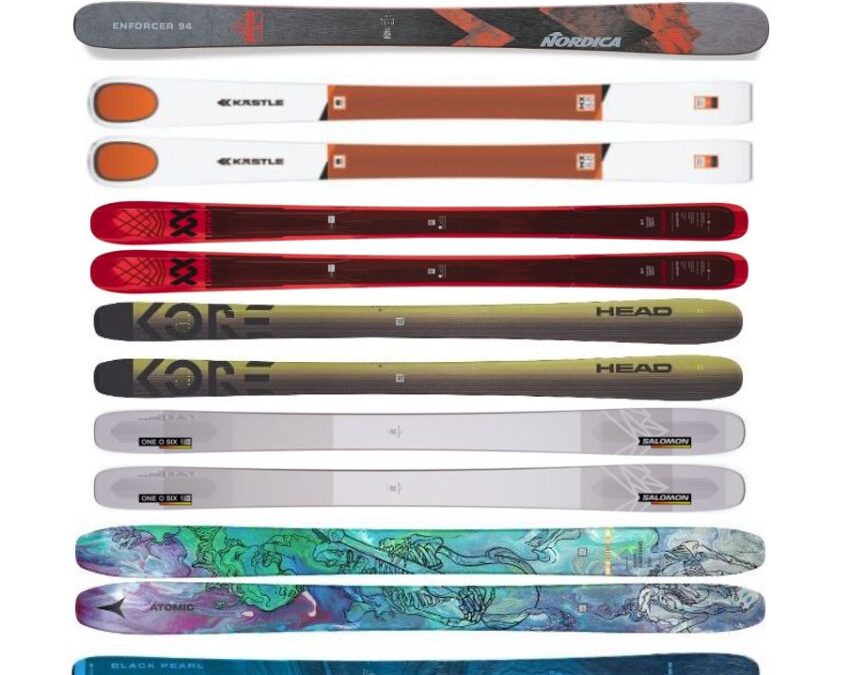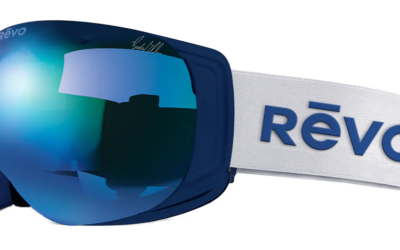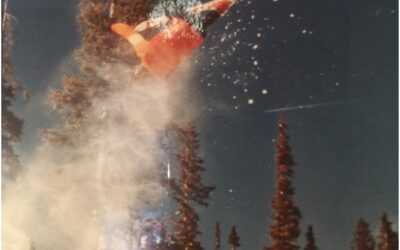
Ever since Doug Pfeiffer and Sven Coomer orchestrated Skiing magazine’s first on-snow ski test, how to usefully categorize the pile of models under review has been an on-going debate. For many years, SKI magazine defined each category according to skier type rather than ski model traits; to find the right ski, you first picked the skier-personality profile that best described you. In an earlier era when all skis were derivative of some sort of race model, every ski was defined by its relationship to a race archetype, hence genres such as “All-terrain Slalom.”
Many of today’s online ski reviews are cobbled together into “Top Ten” or “Best of…” lists with no common thread whatsoever, save that all are accompanied by a Buy Now! button that encourages the reader to jump on a thousand-dollar purchase based on a four-sentence appraisal of dubious accuracy. If you do succumb to a mind-numbing brain cramp while perusing a “Best of…” collection and actually purchase skis online based solely on its recommendation, I suggest you hang onto the box they come in.
The metric we use at Realskiers.com to sort skis into categories is waist width, both because it is an objective criterion and because using this method results in groups of skis that reflect how suppliers have segmented their lines for over a decade. For example, we define All-Mountain West models as having waist widths between 95mm and 100mm. There are several reasons for drawing the line at these points, not least of which is that every major manufacturer makes a star product that fits in this relatively narrow band of the waist-width spectrum.
Not all those manufacturers are necessarily aiming at the same skier type with every model in their line that falls within the AMW waist-width range. To keep comparisons on an equal footing, we exclude Pipe & Park models and skis intended for backcountry climbing from our coverage. Once these highly specialized tools are culled from the herd, the remaining Alpine skis within each genre can be judged by the same criteria on an equal footing.
Where no such specific boundaries exist, all pretense at objectivity, or even coherence, is a sham. I recall a recent “Top Ten Skis” article published by a once-prominent print magazine that installed at the very top of its list a Non-FIS Race GS model no more suitable for all-mountain skiing than a bobsled. (Little wonder this pub no longer appears in print.) Now that ski reviews of Alpine skis have all been relegated to the Internet, incoherence rules the day.
Before I get to the meat of this message, permit me to acknowledge that the genres Realskiers.com omits from our coverage – backcountry and twin-tips (for lack of a better umbrella term) – are still being admirably served by print media focused on these specialties, while the traditional, mainstream, in-resort, Alpine skier is left to decipher the truth by rummaging through the rubbish on the Net. This is ripe ground for charlatans, a subject I shall revisit later this season.
The Magnificent Seven
I penned the preceding, elaborate prelude to prepare my Dear Readers for my own list of skis that defy the usual limitations of the genre to which they belong. I’m not claiming these are the 7 best models being made; they aren’t even necessarily the highest ranked Power or Finesse ski in their respective genres. The special trait they have in common is a cross-category versatility that opens up their performance envelope beyond the usual boundaries imposed by sidecut dimensions.
For each model selected, I’ve crafted an excerpt snipped from its review on Realskiers.com’s subscription site. (Only $24.95/year for new members, $19.95 for recurring subs. Such a deal!) Remember, one of the benefits of membership in Realskiers.com is the right to contact me directly with your equipment woes. Better counsel one cannot find at any price.
And now, in no particular order, are 7 skis that transcend their genres. (Please note the Bent Chetler 120 text was culled from a 2020 review (in the members’ site archives), the last year we had the snowfall needed to review Powder models.)
Nordica Enforcer 94
The essential skill of Alpine skiing is balance. So, it stands to reason that the primordial virtue of any ski is likewise balance, both in its blend of personality traits and its ability to impart the sensation of balance to its pilot. I mention these maxims because if there’s a single trait that encapsulates the brilliance of the Nordica Enforcer 94, it’s balance.
It’s hard to pigeonhole the Enforcer 94 as a specialist at any one thing, for it has the chameleonesque ability to be whatever its pilot wants it to be. The key to its mutability is how mindlessly simple it is to transition from a crisp edge to a friction-free drift. This facility is what makes the Enforcer 94 masterful in any terrain, from brittle hardpack to fluffy powder and every crud-junk-chowder consistency in between. It’s the epitome of an all-terrain tool.
Kastle MX88
There are some skis in the AME genre that do all they can to keep the tip off the snow; the MX88 is obsessed with the opposite concern, how to maintain contact over a rumpled surface that defies it. When confronted with a surface that would cause most double-rockered baselines to quake, the nearly fully cambered MX88 yawns. You can almost hear it say, “That all ya got?”
It’s ability to stay blasé when other skis are getting buffeted around like a teacup in a typhoon can’t be evinced unless the pilot is willing to lay on the gas. So what if it’s not great at slow, short turns? That’s no way to ski crud and it’s certainly a boring means of consuming groomers. One pays a pretty penny for a MX88; what you’re paying for is its unperturbed ride when it kicks into a gear most skis in this genre don’t possess.
Völkl M6 Mantra
With its ultra-secure snow connection, the M6 behaves like an obese Technical carver, with an on-trail bias despite its off-trail girth. Yet the M6 is only as carve-obsessed as its pilot is: it can drift into a turn as readily as any ski its width and its extremities are modestly rockered. The Mantra M6 fears nothing; it’s the crud that should be afraid of it. All that Titanal gets busy when the going gets rough, so the M6 purrs through clumpy snow that would deflect a lesser ski.
While I’m trying to wean some of my Dear Readers off their dependence on test scores, it is interesting to note that when all scores were tallied, the M6’s Power and Finesse scores were identical. Great skis are like that: they aren’t just powerful; they’re also simplicity itself to ski. It’s an irresistible amalgam and what makes the M6 Mantra a star that will shine for many seasons to come.
Salomon QST 106
One trait that has been preserved in the QST 106 over the years is the right blend of stability and agility, so it doesn’t ski as wide as it measures. If a typical expert male were to ski a QST 106 in a 181cm while blindfolded (which I am not encouraging), he probably wouldn’t guess he was on either a 106 or a 181, as it has the quicks of a narrower ski and the quiet ride of a longer one.
It just doesn’t feel fat, even though its weight and width are roughly average for the genre. “It’s a 106 that skis like a wide 100,” as Jim Schaffner from Start Haus condensed its character. It’s the epitome of an all-terrain ski, in that its competence and comportment don’t change as it moves from corduroy to trackless snowfields and yes, even bumps. In Schaffner’s words, the QST 106 is “very well blended, a true all-mountain all-star!”
Head Kore 93
If the Kore 93’s personality profile could be condensed to a single word it would be, “intuitive.” All the skier has to do is aim. The ski is so light, it feels effortless to steer, yet you can rev it up to the red line and it stays the course. Naturally, the Kore 93 can’t match the flotation of the Kore 111, but it is otherwise so quick and stable it’s fine to be a bit more in the snow than on it.
The Kore 93 remains tight-radius friendly at all times, a real bonus in the trees where sudden cornering is critical. The transition to the groom is seamless, as if there were no transition at all. At some point, you stop noticing how light the Kore 93 is and just enjoy the ride. There’s nothing to adapt to; you just ski. It’s the epitome of forgiveness and ease.
Atomic Bent Chetler 120
Both bow and stern of the Atomic Bent Chetler 120 are rockered front-to-back and side-to-side, forming convex contact points that can serve as a prow when going forwards or a pivot point to rotate into rearward. Given how greasy this platform looks, it’s a surprise when it behaves… normally. Of course, the shovel wants to drift a bit before connecting to a turn, but when tilted on edge it knows what to do. After a few turns you become less conscious of its width and more aware of what a smooth, balanced ride it delivers.
Any ski of the Bent Chetler 120’s substantial dimensions will deliver the goods in pristine powder; the real test comes when the fresh stuff runs out. This is when all that surface area and relatively straight sidecut lets the skier use the Chetlers like giant putty knives. Even if the snow broken into choppy fragments, once you’ve poured over it on your Chetlers it will be smooth again.
Blizzard Black Pearl 88
Blizzard already had the best-selling ski in the U.S., men’s or women’s, when it made two changes to the Black Pearl 88 that made the best even better. The first sweetener was TrueBlend, a meticulously arranged parquet of lightweight poplar and denser beech that is adapted for every length. The second major booster was a women’s-specific Titanal plate underfoot that spreads its calming effect over nearly the full length of the ski.
While the Black Pearl 88 provides a great ski for an average skier to progress on, this is underselling its virtues. It’s meant to react to light pressure and conform to terrain rather than crush it. “It’s a good, single-ski-quiver that’s easy to ski,” sums up Level III instructor Lara Hughes Allen, arriving at the same conclusion as thousands of other satisfied women before her.
Related Articles
Revo Big Sky No. 5 from the Bode Miller Series, with Blue Water Photochromic lenses
Just to be clear, I haven’t tried every photochromic lens on the U.S. market, so I can’t say with 100% certainty that Revo’s version is the best extant, but it’s certainly the fastest changing,...
Is Skiing Getting Better or Worse?
As we grow older, events of the misty past take on a warm, pastel glow that suffuses our memories with a charm that seems notably lacking in the present. Part of our sanity- preservation wiring...
What My Murky Crystal Ball Reveals
As I pen this piece in the middle of February, 2024, the outlines of the 2025 American ski market are coming into ever sharper focus. Every important brand has not only pitched its next collection...












